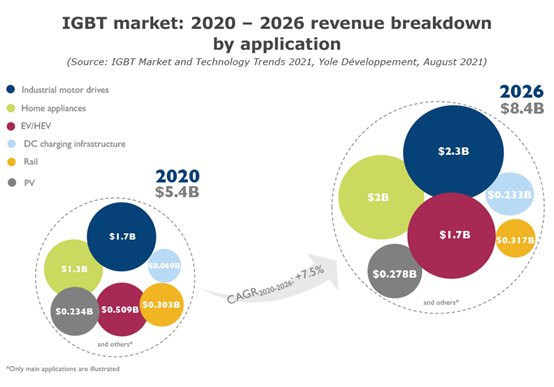What are the application fields of fast recovery diode FRD devices?
Fast recovery diodes, namely power semiconductor devices, are the bridge between weak current control and strong current operation, between information technology and advanced manufacturing, and are an important foundation of the national economy. With the increasingly urgent demand for energy saving and emission reduction in countries all over the world, power semiconductor devices have moved from traditional industrial control and 4C (communication, computer, consumer electronics and automobile) to new energy, rail transit, smart grid, frequency conversion Home appliances and many other industries.
Among all kinds of power semiconductor devices, the power diode is relatively the simplest device, but it is the most widely used component in power electronic circuits and plays a pivotal role in the circuit. Its performance directly affects the rationality of circuit design and the reliability of circuit operation.
However, power electronics technology is developing toward lightness, miniaturization, intelligence, and energy saving, and the application of various control circuits (such as frequency conversion circuits, chopper circuits) continues to expand. Thyristors that are turned off, or new power electronic devices with self-shutoff capabilities, such as GTO, power VDM0S, IGBT, etc., all need a fast recovery diode connected in parallel to pass the reactive current in the load and reduce the capacitance of the capacitor. Charging time, while suppressing the high voltage induced by the instantaneous reversal of the load current. This is because the ability of IGBT, power VDMOS and other devices to withstand reverse voltage is very low when reverse biased, and the reverse diode in the structure is in a conducting state.

In the uninterruptible power supply and switching power supply, in order to obtain the smooth waveform with the least harmonics, the switching frequency of the conversion device must be increased as much as possible. But each switch creates losses, causing the device to heat up. Cooling capacity typically limits the performance of the conversion device. A well-designed diode plays a big role in reducing the losses in the converter, the better the diode switching characteristics, the lower the device turn-on losses.
As the frequency and performance of power electronic devices such as IGBT and power VDMOS continue to increase, in order to match its turn-off process, the diode must have fast turn-on and high-speed turn-off capabilities, that is, it has a short reverse recovery time trr, and a small reverse to the recovery current IRRM and soft recovery characteristics.
In a high-voltage, high-current circuit, the traditional PIN diode has good reverse withstand voltage performance, and it can conduct a large current at a very low voltage when it is forward-biased, showing a low-resistance state . However, the presence of minority carriers injected in the forward direction makes the minority carrier lifetime longer, and the switching speed of the diode is correspondingly lower. In order to increase its switching speed, the method of doping heavy metal impurities and electron irradiation can be used to reduce the minority carrier lifetime. , but the hard recovery characteristics of the diode will be caused to varying degrees here, which will cause a higher induced voltage in the circuit and have an important impact on the normal operation of the entire circuit. Therefore, the development of high-frequency high-voltage fast soft recovery high-power diodes has become a very important and urgent task, which has important practical significance.


